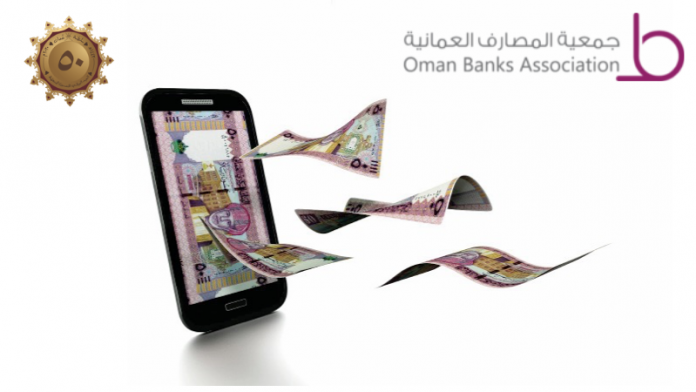Over the last 50 years, Oman’s banking sector has been tapping opportunities to accelerate digital innovation.
Over the years, the banking and finance sector in Oman has shown a remarkable level of maturity, adapting quickly to support the growth of the Sultanate, by implementing international quality standards and establishing technologically advanced digital solutions.
A lot of banks have set up bases in Oman that manage the entire gamut of banking and finance work packages – catering to corporate and individuals alike.
Presently, Oman’s banking sector has continued to perform well despite economic headwinds. Falling oil prices have increased the demand for credit and, as a result, banks’ lending and assets have continued to expand, although liquidity has tightened.
According to a report by the International Monetary Fund (IMF), the Sultanate’s GDP is expected to grow 3 per cent in 2021, compared to -2.8 per cent in 2020, as the COVID-19 pandemic adversely impacts economies globally.
Central Bank of Oman: pioneering change since inception

Established in early 1974, Central Bank of Oman has been at the forefront of driving change and providing the required impetus to the country’s banking sector. Until 1970, Oman had no regulatory body to supervise the monetary and banking system. With the introduction of its own national currency, Oman felt an overbearing need for an authority in currency management.
This led to the birth of a monetary authority called Muscat Currency Authority, whose main work was printing, issuing and redemption, management, and safekeeping, of the new currency.
After this, as a natural outcome of the steady evolution of the monetary system in the Sultanate, as well as of the enhanced influx in the economic activities the country witnessed, under the wise and visionary leadership of the Late His Majesty Sultan Qaboos Bin Said Bin Taimur, the necessity for comprehensive legislation to govern the activities of the banking system, was imperative. This led to the establishment of the reputed and highly respected Central Bank of Oman.
Today, with the significant expansion in banking and economic activities in the country, the Central Bank of Oman plays a pivotal role in pursuing fintech-led growth, regulating policies and practices, and enabling banks to align with the global trend of embracing a digital economy.
Central Bank of Oman is taking coordinated initiatives and studying the diverse needs and potential applications of automation from a business, regulatory, and technology perspective.

The Oman Banks Association (OBA) has played a pivotal role in catalysing the growth of the banking sector in the country. The association regularly initiates activities, which are focused on promoting communication and cooperation between banks and financial institutions, working in partnership with regulators to strengthen the financial sector in Oman and reaching out to the general public to increase financial inclusion and awareness.
OBA is actively engaged with the Central Bank of Oman, banks operating in the Sultanate, and educational institutions, to conduct several activities and undertake programs that promote financial awareness and inclusivity.
Oman Vision 2040 supports innovation
The Oman 2040 vision envisages a diversified, sustainable, and competitive economy that is based on knowledge and innovation; operates within integrated frameworks of the fourth industrial revolution; and achieves fiscal sustainability. With a calibrated approach, Oman will be able to leapfrog traditional phases of development, usher in a new era of growth, and sustain its economic wellbeing.
Defining the roadmap for the evolution of the nation’s banking sector, The Central Bank of Oman (CBO) continues to pursue policies so that the banking sector fulfills its role of financial intermediation efficiently in the economy. Towards this objective, over the years, the CBO has undertaken several policy measures, enabling additional space for lending and effective liquidity management of banks, among others.
Digital transformation is one of the cornerstones of the development of the country’s banking sector. As a development hub for new services, Oman must enhance the way industries and customers operate. Keeping this in mind, the features of the existing mobile payment clearing and switching system are further expanded to promote the use of mobile banking services and mobile wallets in Oman; even to non-banking customers.
Islamic Banking Entities are an essential part of these initiatives, which will increase financial inclusion and ease the access of digital financial services to the customers.
It is important to highlight the banking sector’s contribution to building world-class infrastructure in Oman, through funding relevant projects in housing, national manpower development, manufacturing, roads, etc.
The sector has been instrumental in advancing strategic infrastructure projects and promoting further economic diversification. Also, the banking sector has left no stone unturned in encouraging a savings culture among the citizens of the country. Various prize draw schemes have been implemented by many commercial banks to encourage maintaining a savings balance in their respective bank accounts, thereby qualifying them for the cash draws. Different segments participated in that scheme on a large scale, including, youth, children, senior citizens, salaried and more.
Additionally, Oman’s banking and finance sectors have been on a conscious path of Omanising various posts at the higher and middle levels. The Central Bank of Oman is pursuing a process-led approach towards generating employment for local talent and is followign up on it at regular intervals. According to recent data, the banking sector has achieved 93.5 per cent, and the finance and leasing companies’ sectors have achieved 82.3 per cent, Omanisation rate to date.
The Central Bank of Oman’s efforts to provide equal opportunities for the banking sector includes allowing traditional banks to open specialised Islamic banking windows, along with two banks offering Islamic banking services.
The CBO has also been encouraging the growth of Islamic Banking in the Sultanate through various policy interventions. Furthermore, prudential limits pertaining to overseas investments were not made applicable to Islamic Banking Institutions as there were no feasible Shariah compliant investment opportunities in the Sultanate. Although the performance of these entities has been remarkable so far, the regulators are cognisant of the fact that more is needed for their sustainable growth and efficient operations.
In this regard, the strategic plans include liquidity management frameworks and instruments, diversified financing portfolios, and innovative Islamic finance products. With the introduction of novice products, especially for corporate customers and SMEs, and Sharī’ah-compliant liquidity management tools for interbank and central bank interface, Islamic Banking continues to grow steadily and achieve all potential opportunities.
Future Opportunities
The Sultanate’s banking sector keeps pace with recent technological developments and finding innovative ways to align it to the challenges associated with traditional methods of managing various banking activities. While the sector remains on the growth path, some areas continue to pose a challenge to the sector. What needs to be kept in mind is the fact that banking and finance is a technology, capital, and skill intensive industry.
The government’s priority is to indigenise the industries, attract global investment in Oman and increase Oman’s exports, and lower the dependency on imports. With encouraging regulatory policies and enablers, increased private sector participation, and global attention, the banking and finance sector seems to be set on a growth trajectory.






